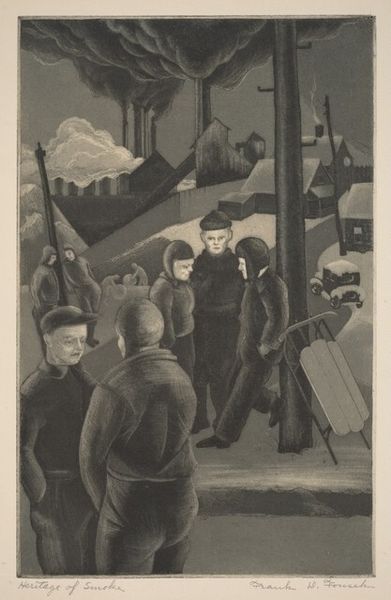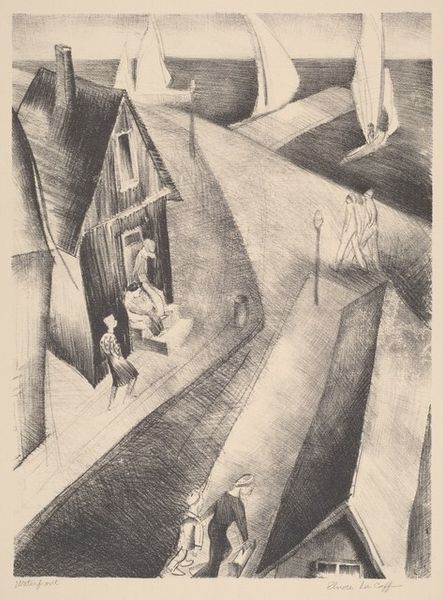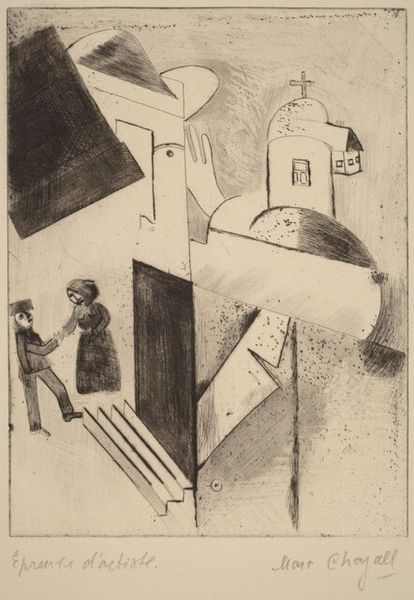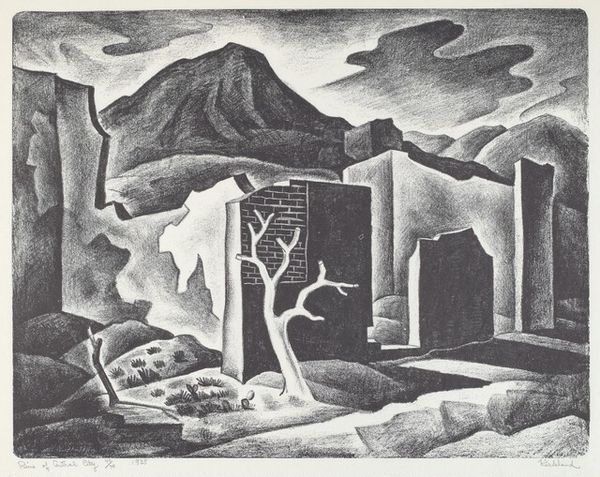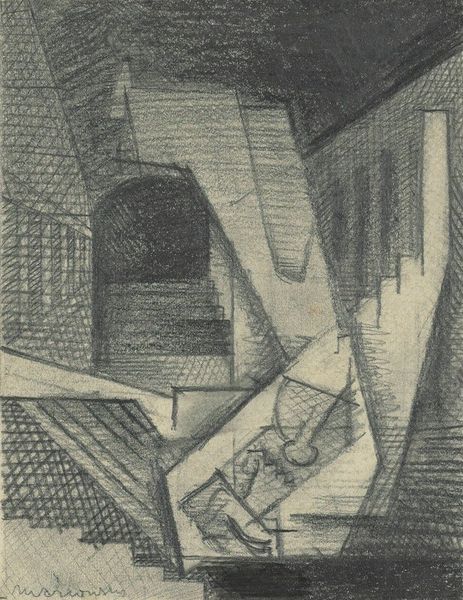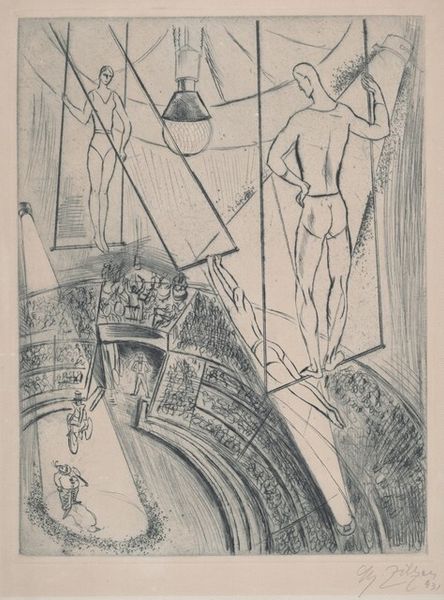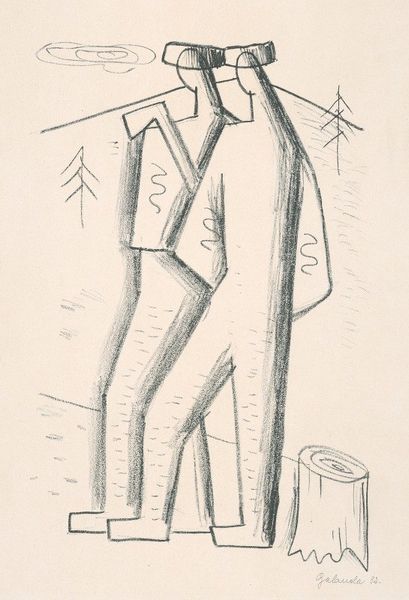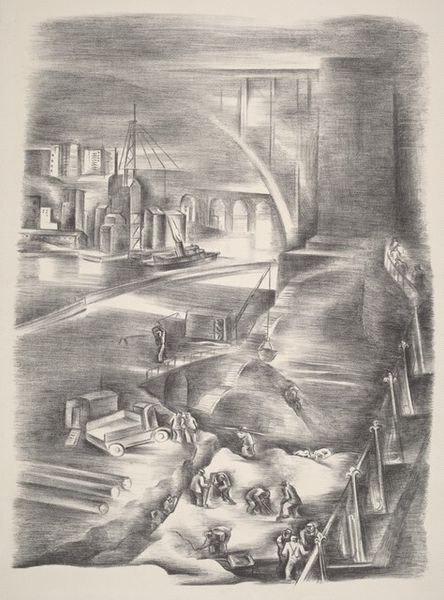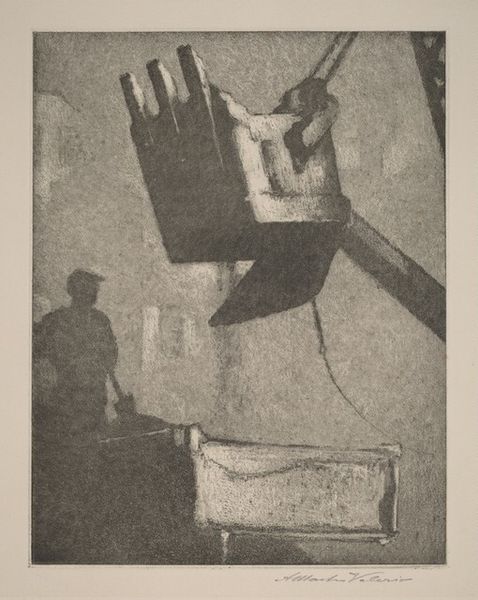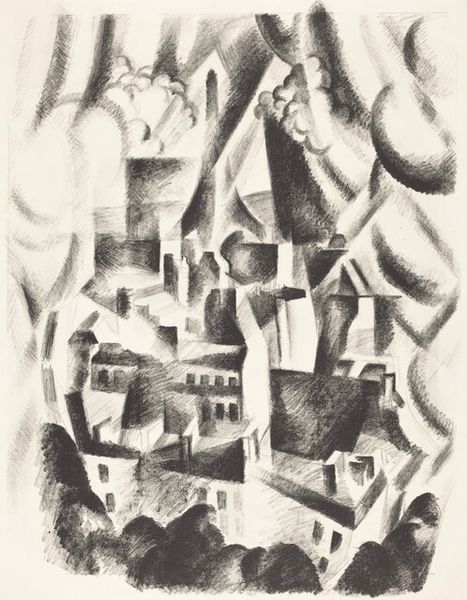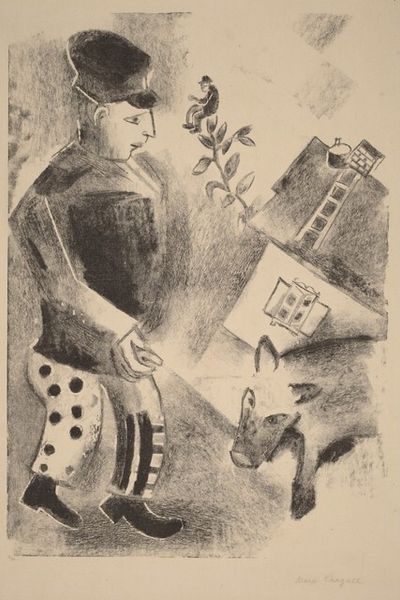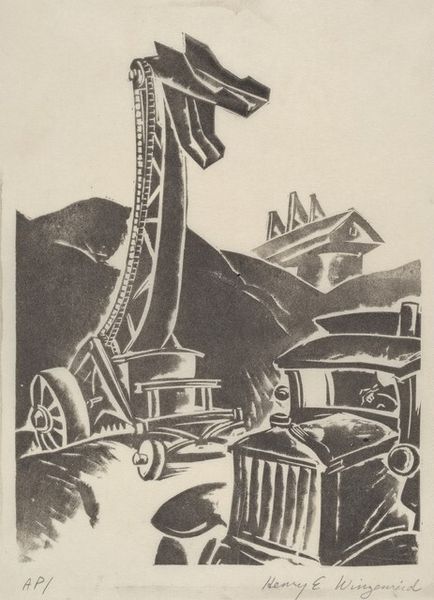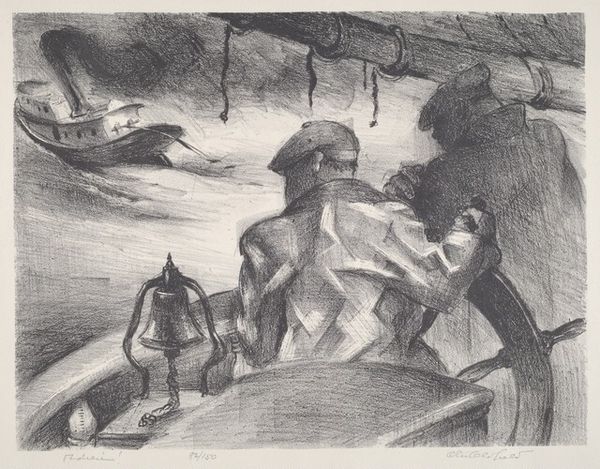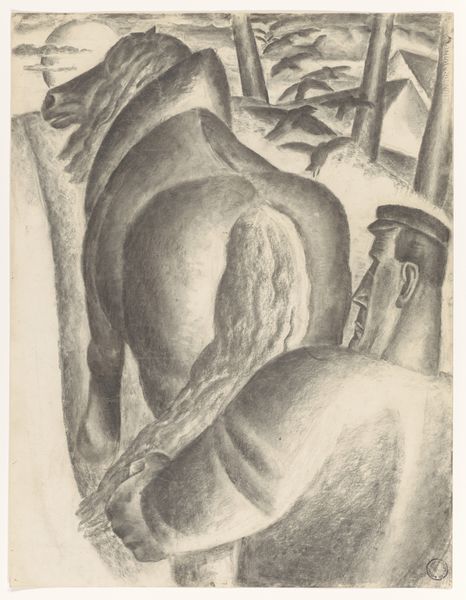
drawing, print, pencil, graphite
#
portrait
#
pencil drawn
#
drawing
#
narrative-art
# print
#
pencil sketch
#
landscape
#
pencil drawing
#
pencil
#
graphite
#
sketchbook drawing
#
history-painting
#
realism
Dimensions: image: 290 x 222 mm sheet: 473 X 314 mm
Copyright: National Gallery of Art: CC0 1.0
Editor: This is John Vincent Bloom's "Untitled (Mourners at Graveside)" from around 1940, a drawing rendered in graphite or pencil. There’s a somber feeling to it, almost heavy, given the subject and the starkness of the medium. What stands out to you as you look at this piece? Curator: What strikes me is the social commentary, subtle as it is. Consider the period: 1940, on the cusp of World War II, a time rife with anxieties about loss and uncertainty, especially among working-class communities. The figures are rendered with a certain stoicism, their grief internalized, almost representative of a collective experience of mourning. Notice the lack of individualization – are we looking at a commentary on class and the universality of death and mourning? Editor: That's interesting. I was focused on the formal aspects, the composition and the use of light and shadow. But your reading gives the piece a whole new layer. Do you think Bloom was consciously making a political statement? Curator: It's hard to say definitively. However, art is never created in a vacuum. Bloom lived and worked within a particular social and political context. The somber realism, the facelessness of the mourners, can be seen as a critique of a society where loss is disproportionately felt by certain groups. Perhaps he is trying to reveal something about power and the social construction of grief? Who gets to grieve, and how? Editor: I never considered it that way. I guess I was too focused on the surface, the technical skill, and missed the underlying message. Curator: Art invites us to consider such complexities. Even a seemingly simple drawing can reveal a wealth of historical and social meanings. It encourages us to interrogate not only the image itself but also our own assumptions and biases. Editor: Right. I'll definitely keep that in mind moving forward, and to look beyond the pure visual for deeper contextual understanding.
Comments
No comments
Be the first to comment and join the conversation on the ultimate creative platform.
